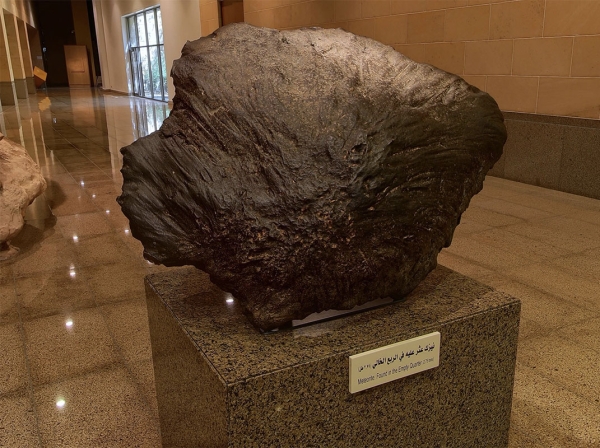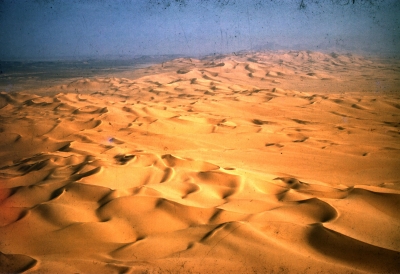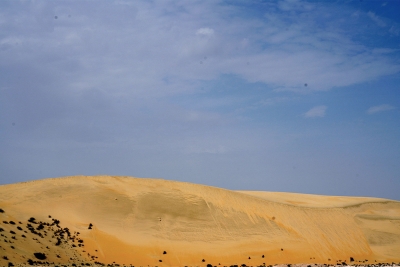
The Wabar Meteorite is a celestial object that fell to Earth, creating craters in the Al-Rub' al-Khali (Empty Quarter) Desert in the Kingdom of Saudi Arabia. It was discovered by the English explorer Abdullah Philby in 1932. The meteorite was later moved to the National Museum in Riyadh. Studies estimate its fall to have occurred more than four hundred years ago, and it weighs approximately 3.5 t.
Al-Rub' al-Khali (Empty Quarter) Desert includes several geological sites, such as al-Hadidah Meteorite Impact Site, Dahl as-Sahmah, the Petrified Wood, Sabkha al-Hamar, Bani Hatimah, and Ghar Jahaman.
Discovery of the Wabar Meteorite
During his expeditions in the Al-Rub' al-Khali (Empty Quarter) Desert in 1932, the English explorer Abdullah Philby discovered the Wabar Meteorite, which had created three craters filled with shifting sands upon its impact with the Earth's surface. Its fall is estimated to have occurred approximately four hundred years ago. The Wabar Meteorite was not the only meteorite discovered in Al-Rub' al-Khali (Empty Quarter) Desert. In as-Sanam area, scattered fragments of al-Hadidah Meteorite, composed of iron and nickel, were found. Its impact is estimated to have occurred 290 years ago.
Characteristics of the Wabar Meteorite
A meteorite is a celestial body that can be rocky, metallic, or a mixture of rock and metal. When meteorites collide with the Earth's surface, they create craters proportional to their size. The impact of the Wabar Meteorite in Al-Rub' al-Khali (Empty Quarter) Desert in Saudi Arabia resulted in the formation of three craters of varying sizes: one with a diameter of 116 m, another sixty-three m, and the smallest eleven m. The meteorite's estimated entry speed into the Earth's atmosphere was approximately 25,000 km per hour.
Related quizzes
Related articles


